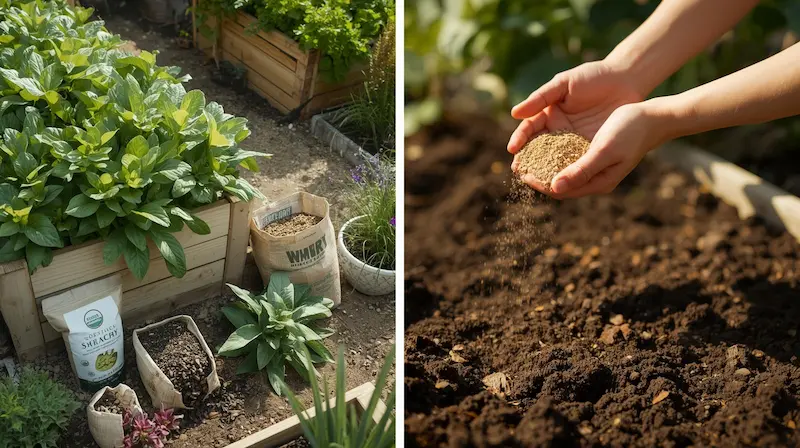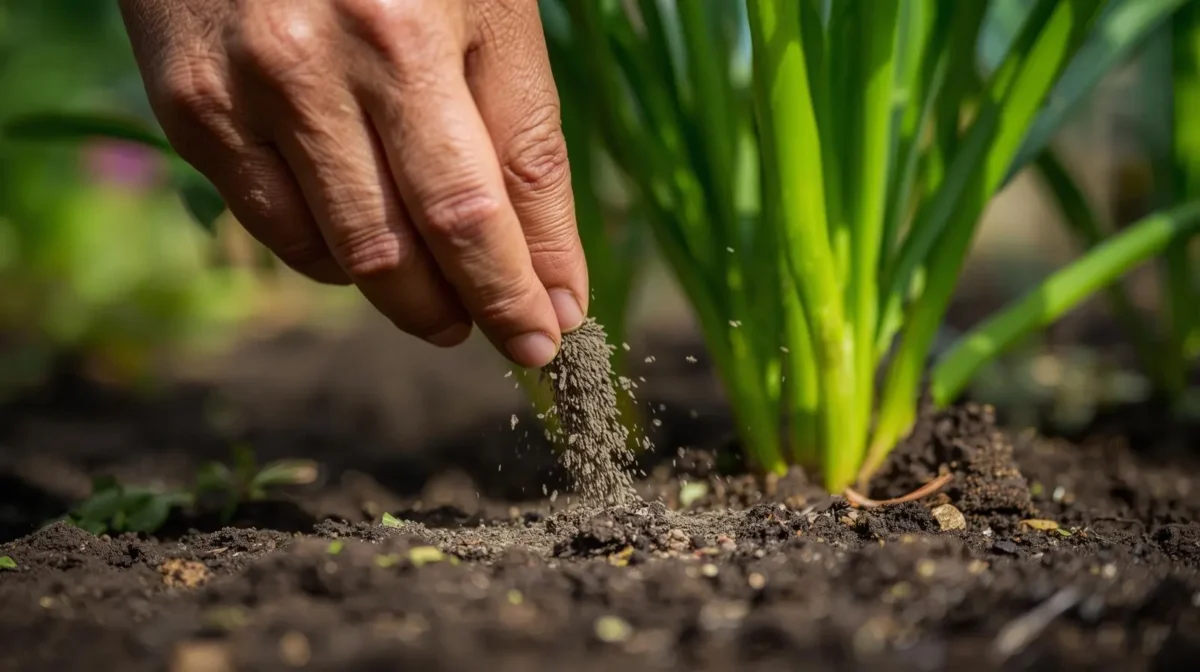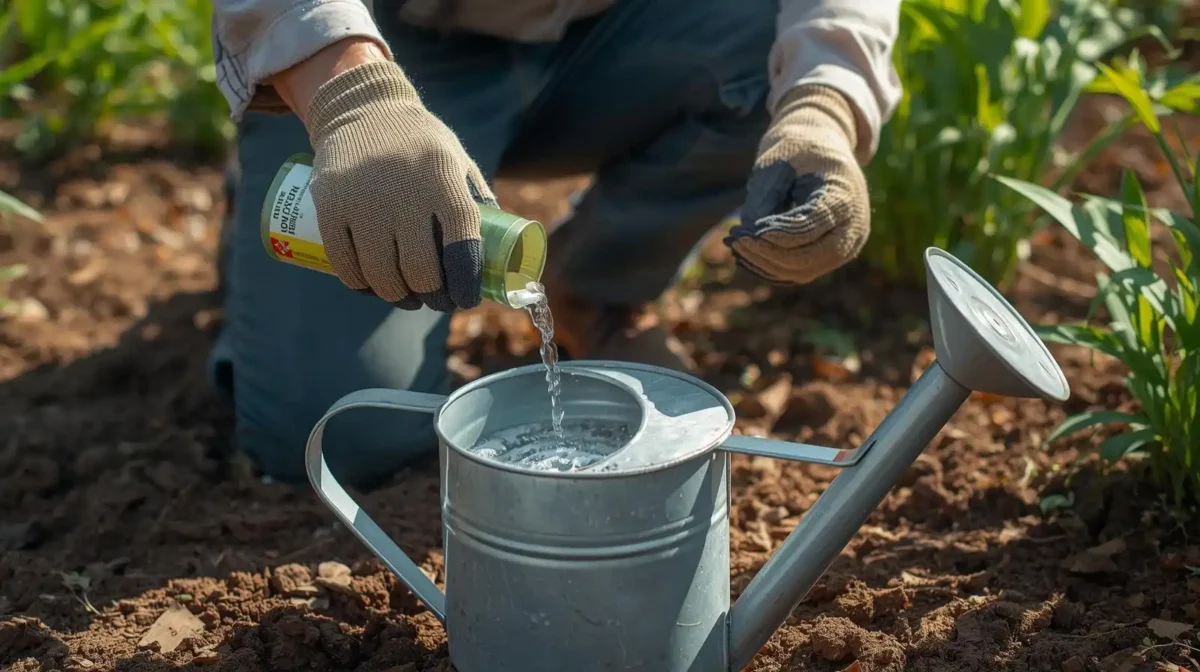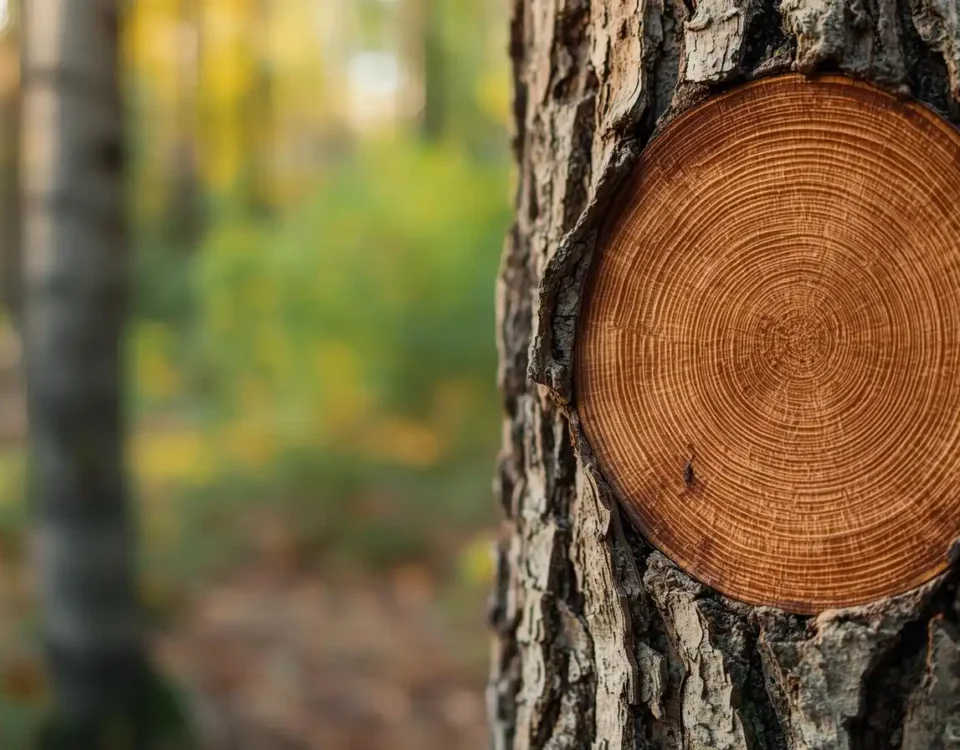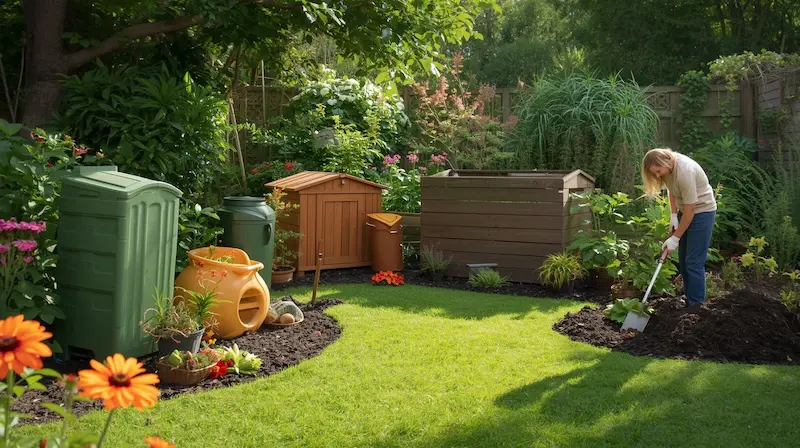
Ultimate Guide to Hugelkultur Beds: Sustainable & Self-Watering
October 5, 2025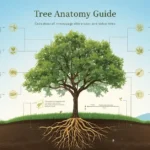
The Essential Guide to Tree Anatomy How Every Part of a Tree Works and Why It Matters
October 10, 2025Are your plants struggling despite your best efforts? Maybe their leaves keep yellowing, blooms fade too soon, or growth seems slow no matter how much care you give, helping with browning arborvitae diagnosis and prevention.It’s frustrating, especially when you’ve tried every store-bought fertilizer on the shelf. And if you’re concerned about the chemicals in those products, particularly with kids or pets around, you’re not alone. Many home gardeners share the same worry: how to grow thriving, healthy plants without harming the environment or their loved ones.
The truth is, most of the confusion comes from not fully understanding what your soil really needs, impacting overall plant and tree health. Between conflicting advice and countless fertilizer options, finding the right solution can feel overwhelming. That’s where organic fertilizers come in. This guide will simplify the process, showing you how to naturally boost soil health, promote stronger roots, and enjoy vibrant growth, all without synthetic additives or harmful runoff, an essential guide for plants and mulch.
By the end, you’ll understand how to choose and use organic fertilizers effectively, discover the best products for every type of plant, and learn simple techniques to keep your garden flourishing year-round. Whether you’re growing vegetables, flowers, or houseplants like the Ficus tree, you’ll gain the confidence to cultivate a garden that’s as sustainable as it is beautiful.
Why Choose Organic Fertilizers for Your Home Garden?
If you’ve ever used traditional chemical fertilizers, you know how quickly they seem to work. Plants green up fast, blooms appear, and everything looks healthy, at least for a while. But what happens beneath the surface tells a different story.
The Drawbacks of Synthetic Fertilizers
Synthetic fertilizers often provide a short-term boost at the expense of long-term soil health. They deliver nutrients quickly, but that instant gratification comes with hidden costs:
- Short-term fixes, long-term damage: Chemical fertilizers act like an energy drink for your plants, fast results, but not sustainable. Over time, they can weaken soil health and make plants dependent on constant feeding.
- Harm to soil microbiology: Synthetic compounds disrupt the natural balance of microorganisms that help plants absorb nutrients. This weakens the soil’s living network and reduces fertility over time.
- Nutrient runoff and water pollution: Excess fertilizer easily washes away during rain or watering, seeping into local waterways and contributing to pollution and algal blooms.
- Chemical residue on edible crops: When used on vegetables or herbs, synthetic fertilizers can leave behind trace chemicals that end up in the food you eat.
- Salt buildup and soil degradation: Many chemical fertilizers contain salts that accumulate in the soil, leading to hard, compacted ground that struggles to support healthy roots.
- Safety concerns for children and pets: These fertilizers often contain compounds that can be toxic if ingested or handled without care, something no gardener wants to risk around loved ones.
The Advantages of Organic Options
Organic fertilizers, on the other hand, work with nature instead of against it. They nourish the soil ecosystem, improve long-term fertility, and promote plant health from the ground up.
Nourishing the Soil Ecosystem
Organic fertilizers feed the living organisms in your soil, not just the plants themselves. This encourages microbial activity, boosts biodiversity, and helps create a balanced ecosystem where roots thrive. Healthy soil structure improves aeration, water retention, and drainage, key factors for sustained growth and fewer plant problems.
Sustainable Plant Vitality
Unlike chemical fertilizers that dump nutrients all at once, organic fertilizers release them slowly and steadily. This gradual delivery prevents nutrient burn and ensures plants receive what they need over time. It also strengthens their natural immunity, making them more resilient to pests, drought, and disease, crucial aspects of tree bark care.
Environmental Safety & Family Well-being
By choosing organic fertilizers, you reduce chemical exposure in your home garden. There’s no risk of toxic runoff harming waterways, wildlife, or beneficial insects. And since they’re made from natural sources, these fertilizers are safer for children and pets who love to explore the garden.
Long-Term Soil Health & Fertility
Organic gardening builds instead of depletes. Over time, organic fertilizers increase the amount of organic matter in your soil, improving fertility naturally. This reduces the need for external inputs and helps create a self-sustaining garden ecosystem where plants and soil work in harmony year after year.
Understanding Organic Fertilizer Basics: NPK & Micronutrients
Before you start applying any fertilizer, it’s essential to understand what’s actually inside the bag. Every fertilizer, organic or synthetic, is built around a balance of three key nutrients: nitrogen (N), phosphorus (P), and potassium (K). Together, these make up the familiar NPK ratio you see printed on every label.
What NPK Ratios Mean
Those three numbers, such as 5-3-2 or 10-5-5, tell you the percentage of each nutrient in the fertilizer.
- N (Nitrogen) – The first number stands for nitrogen, which drives leafy, green growth. It’s especially important for lawns, leafy vegetables, and herbs.
- P (Phosphorus) – The second number represents phosphorus, which supports root development, flowering, and fruiting. Plants like tomatoes, peppers, and root crops depend heavily on it.
- K (Potassium) –The third number is potassium, often called potash. It helps regulate plant metabolism, strengthens disease resistance, and improves the size and quality of fruits and flowers, preventing sudden branch drop syndrome.
When reading a fertilizer label, remember that the numbers are percentages by weight. For example, a bag labeled 4-4-2 contains 4% nitrogen, 4% phosphorus, and 2% potassium. Organic fertilizers usually have lower NPK numbers than synthetic ones, but they provide more balanced, long-term nutrition instead of quick bursts.
Common Micronutrients and Their Roles
Beyond NPK, plants need a range of micronutrients, elements required in smaller quantities but still vital for growth and health. These trace minerals often get overlooked, yet they play specific, irreplaceable roles:
- Calcium: Strengthens cell walls and helps prevent blossom end rot in fruits like tomatoes and peppers.
- Magnesium: Central to chlorophyll production, it’s essential for photosynthesis and vibrant green leaves.
- Sulfur: A building block of proteins and enzymes, sulfur supports strong plant structure, essential for mastering tree shapes.
- Iron: Vital for chlorophyll formation and oxygen transport within plant tissues.
- Trace Elements (Boron, Copper, Manganese, Zinc, Molybdenum, Chlorine): Though needed in minute amounts, they influence everything from flower formation to disease resistance.
Beyond NPK: The Organic Advantage
One of the biggest benefits of organic fertilizers is that they naturally provide a wider range of nutrients than most synthetic formulas. Instead of delivering just N, P, and K, organic options contain trace minerals, humic acids, and beneficial microbes that enrich the soil ecosystem. This creates a more holistic nutrient profile that supports both plant health and long-term soil fertility.
Synthetic fertilizers, by contrast, tend to focus on fast-acting chemical compounds that feed plants directly but do little to build soil structure or microbial diversity. Organic fertilizers feed the entire soil food web, setting the stage for sustainable growth.
How Organic Fertilizers Deliver Nutrients
Organic fertilizers work differently from their synthetic counterparts. They don’t instantly dissolve into the soil. Instead, microorganisms break down organic matter through decomposition and mineralization, slowly releasing nutrients in forms that plants can absorb. This gradual process helps maintain a steady nutrient supply and prevents leaching or nutrient spikes.
Over time, this approach builds a nutrient reservoir in your soil, an active, living system that keeps improving with every feeding.
Expert Tip: Think of it this way: you’re not just feeding your plants, you’re feeding your soil. When you care for the soil’s biology, it takes care of your plants naturally. That’s the heart of organic gardening.
Types of Organic Fertilizers and Their Uses
Organic fertilizers come from natural sources, plants, animals, and minerals, and each type has its own benefits. Choosing the right one depends on what your plants need and how fast you want nutrients to become available. Below is a breakdown of the main categories and how they support healthy growth.
Animal-Based Fertilizers
Animal-based fertilizers are rich in nutrients and often provide a quick boost to plant growth. They also help build long-term soil fertility as they decompose.
- Blood Meal: A powerful source of nitrogen that promotes lush, leafy growth. It’s ideal for greens like spinach, lettuce, and kale, as well as nitrogen-hungry crops such as corn. Because it releases quickly, use sparingly to avoid over-fertilizing.
- Bone Meal: Made from ground animal bones, this fertilizer is high in phosphorus and calcium. It supports strong root systems, vibrant blooms, and productive fruiting. It’s best added before planting or mixed into soil for root vegetables and flowering plants.
- Fish Emulsion or Fish Hydrolysate: A liquid fertilizer packed with balanced nutrients or nitrogen-rich formulations. It acts quickly and can be applied as a soil drench or foliar spray for an instant boost in vigor. It’s gentle enough for seedlings and houseplants too.
- Feather Meal: A slow-release nitrogen source made from processed poultry feathers. It’s perfect for maintaining steady, long-term growth throughout the season without burning plants.
- Bat Guano: A balanced, versatile fertilizer that enhances both soil and plant health. Depending on its source, it can be rich in either nitrogen or phosphorus, making it useful for everything from leafy greens to flowering plants.
- Worm Castings: Often considered “black gold” for gardeners, worm castings are rich in beneficial microbes and mild nutrients. They improve soil texture, increase moisture retention, and create an ideal environment for root growth.
Plant-Based Fertilizers
Plant-based fertilizers decompose more gradually than animal-based ones, enriching soil structure and feeding the microbial life that keeps your garden thriving.
- Alfalfa Meal: Provides a balanced NPK ratio and contains natural growth stimulants that encourage strong, steady plant development. It’s great for improving soil health and supporting all types of garden plants.
- Compost: The cornerstone of organic gardening. Compost delivers a wide range of nutrients, enhances soil structure, improves drainage, and increases water retention. It also boosts microbial activity, helping plants access nutrients more effectively.
- Neem Meal: A byproduct of neem oil extraction, neem meal offers moderate NPK values and serves as both a fertilizer and a natural pest deterrent. It’s particularly helpful for maintaining soil health in vegetable gardens.
- Kelp Meal or Liquid Seaweed: Packed with trace minerals, amino acids, and natural growth hormones like cytokinins and auxins, kelp-based fertilizers strengthen plants, improve stress tolerance, and encourage strong root systems.
Mineral-Based Fertilizers
Mineral-based fertilizers are naturally occurring substances that supply key nutrients and improve soil texture. They’re ideal for correcting deficiencies and promoting long-term soil balance.
- Greensand: A natural mineral deposit rich in potassium and trace elements. It improves soil structure and moisture retention, especially in sandy soils.
- Rock Phosphate: A slow-release source of phosphorus that supports long-term root and flower development. Ideal for perennial gardens and fruiting plants.
- Gypsum: Contains calcium and sulfur, two essential nutrients for cell structure and enzyme function. It also helps loosen compacted clay soils and corrects sodium buildup in alkaline conditions.
Choosing the Right Type for Your Garden
The best organic fertilizer depends on what stage your plants are in and what kind of growth you want to encourage.
- For leafy growth, choose nitrogen-rich options like blood meal, fish emulsion, or alfalfa meal.
- For flowering and fruiting, go with phosphorus-rich fertilizers such as bone meal or rock phosphate.
- For overall soil health, compost, worm castings, or kelp meal are great all-around choices that support microbial life and nutrient balance.
Expert Insight: Think of fertilizers as part of a complete ecosystem strategy, not just a quick nutrient fix. By matching the right type to your plants’ needs and growth stage, you’ll create a balanced, thriving garden that sustains itself season after season.
How to Apply Organic Fertilizers Effectively
Applying organic fertilizers isn’t just about scattering them around and hoping for results. The way you apply them, and when, can make all the difference in how well your plants absorb nutrients and how healthy your soil becomes over time. Here’s how to do it right from the start.
Before You Begin: The Importance of a Soil Test
Before reaching for any fertilizer, take the time to understand what your soil truly needs. A soil test reveals nutrient levels, organic matter content, and pH balance. This step prevents unnecessary applications and helps you choose the right fertilizer type and amount.
You can get a soil test kit from most garden centers, or send a sample to a local agricultural extension office for detailed analysis. Once you receive the results, look for deficiencies in key nutrients like nitrogen, phosphorus, or potassium, and note the pH range, most plants prefer slightly acidic soil (around 6.0 to 7.0).
Expert Tip: Don’t guess, test. Starting with a soil test saves time, money, and effort while keeping your garden’s ecosystem balanced.
Application Methods
Organic fertilizers come in different forms, each with its own method of application. Using them correctly ensures nutrients reach your plants effectively.
Granular Fertilizers
Granular fertilizers are dry and slow-releasing, perfect for long-term feeding.
- How-to: Evenly spread the granules around the base of your plants or across the garden bed. Gently work them into the top few inches of soil or use them as a top-dressing for established plants.
- Expert Tip: Always water thoroughly after applying granules. Moisture activates the decomposition process, allowing nutrients to start breaking down and moving into the soil.
Liquid Fertilizers (Dilution is Key)
Liquid fertilizers deliver nutrients quickly and are great for giving plants an immediate boost.
- How-to: Mix the concentrate according to the product label, usually a few tablespoons per gallon of water. Apply as a soil drench around plant bases or pour into a watering can for easy distribution.
Expert Tip: Always follow dilution instructions carefully. Over concentrated solutions can stress or burn plants, especially young seedlings.
Foliar Sprays
Foliar feeding involves spraying diluted liquid fertilizer directly onto the leaves. Plants absorb nutrients quickly through their leaf surfaces, making this ideal for correcting micronutrient deficiencies or giving a quick growth boost.
- How-to: Spray the leaves evenly in the early morning or late afternoon to prevent sunburn. Focus on the undersides of leaves where nutrient absorption is highest.
Visual comparison idea: Show a side-by-side graphic of the three application types, granular (soil base), liquid (watering), and foliar (leaf spray), to illustrate how each targets different parts of the plant.
Timing is Everything
When you apply organic fertilizer matters just as much as how.
- At planting: Mix fertilizer into the soil to give seedlings a healthy start.
- During active growth: Apply regularly through the growing season to sustain steady nutrient availability.
- Before blooming or fruiting: Use phosphorus-rich options like bone meal or compost tea to support strong flowering and fruit set.
Seasonal tips:
- In spring, focus on nitrogen for leaf and stem growth.
- In summer, maintain balance for steady growth and flowering.
- In fall, add compost or manure to build soil health for the next growing season.
Dosage & Avoiding Common Mistakes
With organic fertilizers, more is not always better.
- Always follow the product label for recommended amounts.
- Under-fertilizing can slow growth, but over-fertilizing can disrupt soil balance and waste nutrients.
- Organic fertilizers work slowly because they rely on microbial activity. Don’t expect overnight results, healthy, lasting growth takes time.
Expert Tip: Organic fertilizers reward patience. Monitor your plants for a few weeks after application, look for greener leaves, stronger stems, and gradual improvement rather than instant results.
Safety Around Pets and Children
Because organic fertilizers are made from natural materials, they’re generally safer than synthetic options. Still, it’s important to use them responsibly.
- Store products securely and keep them out of reach of kids and pets.
- Water in granular fertilizers immediately to prevent accidental ingestion by animals.
- Use pet-safe barriers or fencing in garden areas if necessary.
Pain Point Addressed: If you’ve ever worried about exposing your family or pets to harmful chemicals, organic fertilizers offer peace of mind. When handled correctly, they support a safe, thriving garden environment for everyone.
Top 10 Organic Fertilizer Products for Home Gardens
Below is a comparative overview of trusted organic fertilizers. I selected these based on effectiveness, ingredient purity (e.g. OMRI or equivalent certifications), user feedback, versatility, and sustainability.
| # | Product Name | Type | Primary NPK* | Key Benefits | Application Method | Pros | Cons | Buy |
|---|---|---|---|---|---|---|---|---|
| 1 | Earthworm Castings | Granular | ~1-0-0 (varies) | Soil conditioner, boosts microbes, gentle feeding | Top-dress, mix into soil | Improves structure, safe for seedlings | Low macronutrient content, costly for large areas | Buy on Amazon |
| 2 | Alaska Fish Emulsion | Liquid Concentrate | 5-1-1 | Fast nitrogen boost, leafy growth | Soil drench, foliar spray | Quick absorption, OMRI-listed | Strong odor, low P & K | Buy on Amazon |
| 3 | Down To Earth Bone Meal | Granular | 3-15-0 | Promotes root growth, flowering | Mix into soil before planting | Excellent phosphorus source, slow-release | Low nitrogen, must be buried | Buy on Amazon |
| 4 | Espoma Organic Blood Meal | Granular | 12-0-0 | Rapid nitrogen boost, leafy greens | Top-dress, mix into soil | Fast greening, great for heavy feeders | Risk of burning, may attract animals | Buy on Amazon |
| 5 | Down To Earth Alfalfa Meal | Granular | 2.5-0.5-2.5 | Balanced nutrition, soil health | Top-dress, mix into soil | Encourages microbes, gentle | Slow-acting, not for urgent needs | Buy on Amazon |
| 6 | Neem Cake Organic Fertilizer | Granular | 4-1-2 | Fertilizer + mild pest deterrent | Mix into soil | Dual benefits, improves soil | Strong odor, slow breakdown | Buy on Amazon |
| 7 | Maxicrop Liquid Seaweed | Liquid / Concentrate | ~0-0-1 | Trace minerals, stress recovery | Foliar spray, soil drench | Gentle, boosts resilience | Low NPK, use as supplement | Buy on Amazon |
| 8 | Organic Bat Guano | Granular | ~7-3-1 (varies) | Balanced growth, flowering | Top-dress, light mix | Rich in nutrients, boosts blooms | Expensive, sourcing ethics vary | Buy on Amazon |
| 9 | Suståne Feather Meal | Granular | 4-6-2 | Steady nitrogen & nutrition | Mix into soil | Long-term feeding | Slow to activate | Buy on Amazon |
| 10 | Black Gold Organic Compost | Bulk / Granular | Varies | Soil builder, improves structure | Mix into soil, top-dress | Enhances biology & moisture | Bulky, not concentrated | Buy on Amazon |
Real-World Testimonials & Mini Case Studies
Cost-Benefit & Long-Term Soil Health Impact
- Earthworm Castings are often more expensive per kilogram than plain fertilizers, but their impact on soil biology and structure means you rely less on external inputs over time.
- Fish Emulsion offers a strong return when used in moderation: fast-acting nutrients at low doses mean you don’t waste product.
- Bone Meal is a cost-effective choice for root and bloom support; even a small amount can make a difference in phosphorus-poor soils.
- Blood Meal is powerful but must be used carefully. Its fast action is great, but overuse leads to nutrient imbalance or waste.
- Neem Cake offers the dual benefit of fertilization plus pest suppression, making it more “cost-effective” when factoring in fewer pest control products needed.
- Black Gold Organic Compost is often bulk-priced reasonably if available locally; its long-term soil building adds value that typical fertilizers simply can’t match.
Each product here contributes differently to long-term soil health: castings, compost, and alfalfa meals build structure and microbial life; bone meal, guano, and fish emulsion correct deficiencies; neem and seaweed boost resilience. A wise gardener blends a few of these tools rather than relying on a single product.
Choosing the Right Organic Fertilizer for Your Garden’s Needs
Every garden is different. The best fertilizer for your space depends on your soil, plants, and goals. Below, you’ll find a simple guide to identifying what your garden truly needs, and how to choose the right organic fertilizer to match.
1. Identify Your Garden’s Specific Needs
Soil Condition
Your soil is the foundation of everything. Before buying any fertilizer, it’s worth knowing whether your soil is:
- Heavy Clay: Dense and slow-draining. Needs compost, worm castings, or alfalfa meal to improve texture and microbial activity, much like building a hugelkultur garden bed.
- Sandy: Drains too quickly and leaches nutrients. Go for compost, fish emulsion, or seaweed fertilizer for consistent feeding.
- Nutrient-Deficient: Use balanced organic mixes like alfalfa meal or Suståne Feather Meal to restore fertility.
- Acidic or Alkaline: Test pH before fertilizing. Some amendments (like bone meal) can raise pH slightly, while others (like compost) help buffer both extremes.
Expert Tip: Always start with a soil test. It’s the most reliable way to see what nutrients are missing and prevent over-fertilization. Even a simple home kit can tell you if your soil lacks nitrogen, phosphorus, or potassium.
Plant Type
Different plants draw on nutrients differently:
- Vegetables: Need steady, balanced nutrition. Compost, fish emulsion, or alfalfa meal are reliable options.
- Herbs: Prefer lighter feeding. Use worm castings or diluted liquid seaweed.
- Flowers: Thrive with extra phosphorus (bone meal, bat guano).
- Trees & Shrubs: Benefit from slow-release fertilizers like feather meal or neem cake.
- Indoor Plants: Use mild options like compost tea or worm castings to avoid buildup.
Growth Stage
- Seedling Stage: Gentle nutrition, worm castings or compost tea.
- Vegetative Stage: High nitrogen, blood meal or fish emulsion.
- Flowering/Fruiting Stage: Phosphorus and potassium, bone meal or bat guano.
Common Problems & Quick Fixes
|
Problem |
Likely Cause |
Recommended Solution |
|
Yellowing leaves |
Nitrogen deficiency |
Blood Meal, Fish Emulsion |
|
Poor flowering or fruiting |
Low phosphorus |
Bone Meal, Bat Guano |
|
Stunted growth / pale color |
General nutrient deficiency |
Alfalfa Meal, Worm Castings, Compost |
|
Pest pressure |
Soil imbalance / weak plants |
Neem Cake (fertilizer + pest deterrent) |
2. Budget Considerations
Organic fertilizers range from low-cost DIY options to high-quality branded products.
- Cost-effective choices: Homemade compost, worm castings, or alfalfa meal.
- Premium specialists: OMRI-listed products like Down to Earth Bone Meal or Maxicrop Liquid Seaweed offer consistent results and certified purity.
If you’re gardening on a budget, focus on building healthy soil biology first. Once your soil ecosystem improves, plants need fewer inputs overall.
3. Decision Tree: How to Choose Your Fertilizer
Question 1: What’s your primary goal?
- Lush leaves → Nitrogen-rich fertilizer.
- More blooms/fruits → Phosphorus-rich fertilizer.
- Stronger soil and overall health → Balanced or compost-based fertilizer.
Question 2: What’s your soil type?
- Clay → Compost or alfalfa meal.
- Sandy → Fish emulsion or worm castings.
Question 3: What’s your preferred application method?
- Liquid (quick results): Fish emulsion, liquid seaweed.
- Granular (slow release): Bone meal, alfalfa meal, neem cake.
- Foliar spray (fast absorption): Seaweed or compost tea.
Question 4: Are you addressing a deficiency?
- Yes → Choose a targeted product (blood meal, bone meal, etc.).
- No → Go for a general soil builder like compost or castings.
4. Look for Quality Certifications
When comparing products, check for organic certification.
Labels such as OMRI Listed, NOP Certified, or EU Organic ensure that the product meets recognized organic farming standards and contains no synthetic additives.
Certified fertilizers may cost more upfront, but they guarantee purity, consistency, and long-term soil safety, key factors for gardeners who value sustainability.
DIY Organic Fertilizers: Quick & Easy Home Options
You don’t always need to buy expensive fertilizers to give your plants a nutrient boost. Many of the best organic fertilizers can be made right in your kitchen or backyard using everyday materials. These DIY options are budget-friendly, reduce household waste, and help you understand your soil better.
1. Utilizing Kitchen Scraps & Garden Waste
Nature rarely wastes anything, and neither should your garden. Here are some simple materials you can repurpose into effective organic fertilizers:
Coffee Grounds
Used coffee grounds are rich in nitrogen and add organic matter that improves soil structure. They’re especially beneficial for acid-loving plants like tomatoes, roses, blueberries, and azaleas.
- How to Use: Mix into compost or sprinkle lightly around the base of plants. Avoid piling too much, as thick layers can compact and block airflow.
- Expert Tip: Always use used coffee grounds, fresh grounds are too acidic.
Banana Peels
Banana peels are loaded with potassium and a bit of phosphorus, both key nutrients for flowering and fruiting plants.
- How to Use: Chop peels into small pieces and bury them 2–3 inches deep near plant roots, or soak them in water for 2–3 days to make a simple banana peel tea.
- Best For: Roses, tomatoes, and peppers.
Eggshells
Crushed eggshells provide a steady source of calcium, which helps prevent blossom end rot in tomatoes and peppers and strengthens plant cell walls.
- How to Use: Rinse, dry, and crush finely before mixing into the soil or compost. For faster results, grind them into powder before applying.
- Note: Eggshells break down slowly, so they’re best used as a long-term soil amendment.
Wood Ash
If you have a fireplace or wood-burning stove, clean wood ash can be a great source of potassium and calcium carbonate.
- How to Use: Sprinkle a small handful per square meter and mix into the top layer of soil.
- Caution: Wood ash raises soil pH, so avoid using it around acid-loving plants. Always apply sparingly.
Compost Tea
Compost tea is a liquid version of compost that delivers nutrients directly to plant roots or leaves. It’s quick to make and helps boost microbial activity in the soil.
- How to Make:
- Place 1 part finished compost into a porous bag or cloth.
- Steep in 5 parts water for 24–48 hours, stirring occasionally.
- Strain and use the liquid to water plants or spray on leaves.
- Place 1 part finished compost into a porous bag or cloth.
- Best For: All-purpose feeding during active growth.
Grass Clippings
Fresh grass clippings contain nitrogen and make excellent mulch that slowly releases nutrients as it breaks down.
- How to Use: Spread a thin layer (no more than 1 inch) around plants, keeping clippings away from stems.
- Expert Tip: Dry the clippings for a day before applying to prevent matting or odor.
2. Simple Preparation & Application
Homemade fertilizers don’t need to be complicated, but safe handling is important:
- Chop or crush materials to speed up decomposition and nutrient release.
- Apply small amounts regularly rather than all at once, organic materials feed slowly.
- Combine ingredients (like coffee grounds + compost or banana peel tea + seaweed extract) for more balanced nutrition.
- Avoid animal fats or cooked food waste, as they can attract pests and cause odor.
Expert Tip: Compost is your garden’s best friend. It ties all these materials together, creating a nutrient-rich base that supports soil microbes, improves texture, and helps plants absorb nutrients efficiently.
3. Benefits & Limitations
Benefits
- Cost-Effective: Uses materials you already have at home.
- Eco-Friendly: Reduces waste and your environmental footprint.
- Soil Health: Encourages beneficial microbes and improves structure over time.
Limitations
- Inconsistent Nutrient Levels: Homemade fertilizers vary in strength and release rate.
- Slower Results: It takes time for materials to decompose and become available to plants.
- Possible Odor or Pests: Improperly applied organic matter can attract animals or insects.
FAQs About Organic Fertilizers
Conclusion
Organic fertilizers offer more than just plant nutrition, they nurture the soil, your plants, and the environment. By understanding NPK ratios, selecting the right fertilizer type, and applying it correctly, you give your garden the foundation it needs for long-term health and productivity. Whether you choose tried-and-true products like Earthworm Castings, Bone Meal, or Fish Emulsion, or explore DIY options from your kitchen and yard, the result is the same: stronger, more resilient plants and a richer, living soil ecosystem.
Embracing organic gardening means creating a vibrant, sustainable garden that supports family well-being and contributes positively to the environment. It’s a way to grow food and flowers safely while fostering biodiversity and ecological balance.
Call to Action: Ready to transform your garden into a thriving organic oasis? Choose the right organic fertilizer from our top recommendations, apply it with confidence, and watch your plants flourish. Share your experiences, ask questions, and become part of a community of gardeners dedicated to healthy, sustainable growth.


